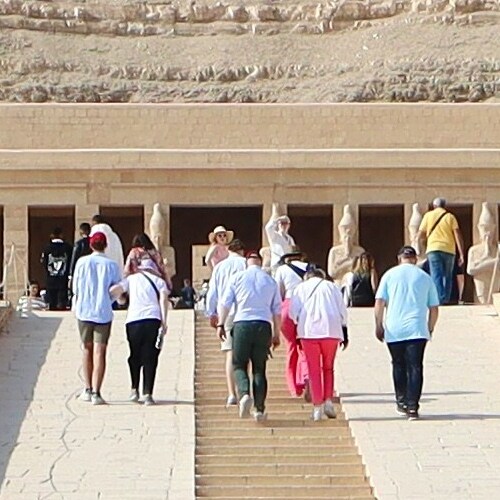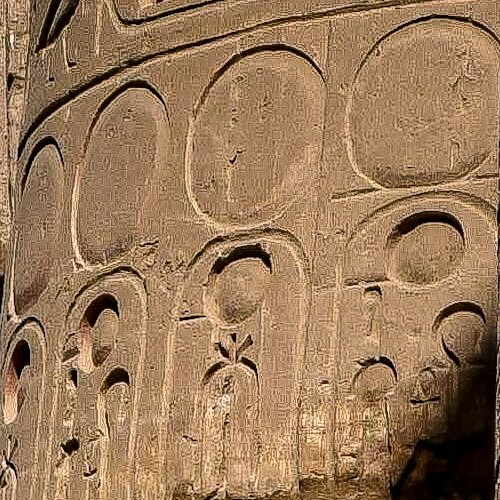The Luxor Temple
Luxor Temple: A Historical and Architectural Overview
Location and Construction
- Geographical Setting: Luxor Temple, a pinnacle of ancient Egyptian architectural brilliance, stands proudly on the East Bank of the Nile in Luxor, which was known in ancient times as Thebes.
- Dedication: This majestic temple was dedicated to the veneration of the Theban triad, comprising the gods Amun, Mut, and their son Khonsu.
Historical Significance
- Primary Constructors: The temple’s initial construction began under the reign of Amenhotep III, a prominent pharaoh of the 18th Dynasty. His vision set the foundational layout of the temple.
- Ramses II’s Contribution: A significant expansion and embellishment were later carried out by Ramses II, one of the most famed rulers of the 19th Dynasty. His additions notably included the temple’s grand entrance and the forecourt.
- Subsequent Additions: Over the centuries, various rulers, including Alexander the Great, left their mark on the temple, enriching its historical and cultural significance.
- Roman Era: In the Roman period, the temple experienced a phase of neglect and was subsequently buried under sand, leading to its partial obscurity until modern rediscovery.
Architectural Highlights
- The Avenue of Sphinxes: The temple is approached through the iconic avenue of sphinxes, once linking it to Karnak Temple, situated approximately 2 kilometers away.
- Entrance Colossi: Dominating the entrance are the colossal statues of Ramses II, each towering at a height of 25 meters, symbolizing the pharaoh’s power and divine stature.
- The Obelisk: Adorning the entrance is also a striking pink granite obelisk, a testament to the engineering prowess of the ancient Egyptians.
- Ramses II’s Court: Within the temple, the expansive courtyard built by Ramses II houses the Fatimid Mosque of Abu El Haggag, dating back to the 13th century, illustrating a unique blend of ancient and medieval architecture.
- Colonnade of Amenhotep III: A highlight of the temple is the elegant colonnade constructed by Amenhotep III, featuring 14 columns, each intricately designed, leading to the inner sanctuaries of the temple.
Current Status
- Rediscovery and Preservation: The temple was rediscovered in 1881 by French archaeologist Gaston Maspero, who unearthed it from beneath the sands, revealing its remarkably preserved state.
- Tourist Attraction: Today, Luxor Temple stands as a premier attraction for visitors worldwide, offering a glimpse into ancient Egypt’s grandeur and its evolving architectural styles through different dynasties.
Conclusion
Luxor Temple, a symbol of religious devotion and royal authority, continues to fascinate with its architectural splendor and historical depth. It remains a pivotal site for understanding the complexities of ancient Egyptian civilization, religion, and art.
LUXOR Travel Guide



